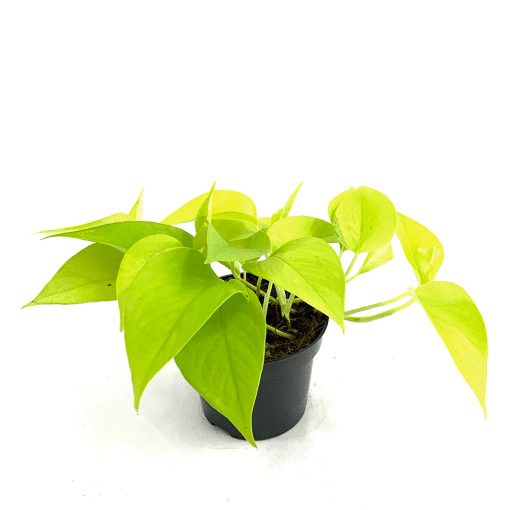Scindapsus Pictus
The satin pothos, Scindapsus pictus, is a climbing houseplant with alluring, velvety leaves flecked with silver.
Endemic to humid forests of Bangladesh and much of Southeast Asia, including Thailand and Borneo, Scindapsus grows in the understory of large trees and naturally climbs to access light higher up in the forest canopy.
The heart-like shape leaves are velvety to the touch and matte in texture, which has led this plant to have the familiar names Philodendron Silver and Satin Pothos (though botanically, it is neither Philodendron nor Pothos).
Scindapsus aureus is the common one. Scindapsus pictus “Argyraeus”, commonly called the silver vine, is a lovely plant that grows up the trees in our Malaysian jungles.
The heart-shaped leaves are dark green with silverish markings. The plant clings to its tree support by sending out clasping roots.
This small-leafed Scindapsus cultivar shows its variegation in a beautiful spotting pattern throughout the leaves.
Eventually, its vines grow pretty long, making Scinapsus pictus an excellent choice for hanging planters.
Scindapsus Pictus Repot in Spring
Once the plant outgrows its container, use a pot only a few inches bigger as a way enormous container will hold an excess of water. A brilliant idea would be to use a pot with drain holes.
Should you choose to use a cachepot (container without drainage holes), place a standard nursery pot inside the cachepot. You can cover the bottom of cachepots with pebbles to keep the inside pot above the draining water.
satin pothos Scindapsus pictus complications usually appear in leaves.
Brown leaf tips are caused by overly dry air. Yellow leaves are a result of overwatering.
Brown spots with yellow halos around the edges indicate bacterial leaf spots. Clip off affected leaves. Avoid getting leaves wet when watering.
Scindapsus Pictus Care Tips
Origin: Southeast Asia 
Height: Up to 3 ft (90 cm) or even more. You may cut the stalks back to any length if you prefer a shorter houseplant.
Light: Provide Scindapsus pictus bright, non-direct light thorough the year. Severe direct sunlight will burn its leaves, while too little light will invoke the leaves to lose their variegation.
Water: Water entirely and allow the top inch of soil to dry out between the watering cycle. Keep the soil hardly moist during the winter.
Yellowish leaves are a symptom of over-watering. Regularly use room-temperature water when you are watering houseplants and provide reliable drainage.
Humidity: Try to keep 40 to 50% relative humidity about your plant. You can use a small humidifier or a humidity tray if the air is overly dry during winter.
Temperature: Moderate to warm 65-85°F/18-29°C. Please do not expose Satin Pothos to temperatures below 60°F/16°C, not even for a short time; hence, cold air will ruin this tropical plant’s foliage.
Soil: Use an all-purpose houseplant potting mix.
Fertilizer: Feed each month spring through fall with a 20-10-10 water-soluble fertilizer diluted by half.
Propagation: In spring or early summer, use 4-inch (10 cm) tip cuttings and insert them into moist peat moss-based potting mix. Cuttings root easily in around a month.
Neon Pothos

Neon pothos, a new selection, offers all the features that make you know great. It seems to thrive on neglect wIt appears to thrive on neglect with heart-shaped foliage, a pretty trailing habit, and a never-say-die attitude
Its chartreuse leaves glow and will brighten any spot in your house.
Bird’s nest fern adds interest and texture to the display. Its apple green, wavy-edged leaves unfurl from a tight center, giving the appearance of a bird’s nest.
Mature foliage also boasts a beautiful black midrib (central vein) that adds further appeal. This attractive plant is elementary to grow.
It prefers medium to bright, indirect light but can take low-light conditions.
Use these indoor plants alone, or combine them in pretty pots with drainage holes for a bright display to liven up your home.
How To Propagate Scindapsus Pictus
Scindapsus is easily propagated from cuttings. You’ll need a mature(ish) plant with 20cm or longer stems, scissors or secateurs, an old jam jar or similar container, another pot, and some peat-free compost.
To begin, look for healthy stems and check for any pests. Count three to five leaves from the end and cut just beneath a leaf node (where the leaf joins the stem).
Carefully remove two or three leaves closest to the cut — gently break them off the stalk or carefully cut them off.
Fill a jar about one-third full. With water and add the cuttings. Keep it somewhere warm and bright but out of direct sunlight and check on it regularly.
After a few weeks, you should notice roots beginning to grow from the node where the leaf was. Once these are 10cm long or more, carefully plant the cuttings into a medium-sized pot, keeping the compost moist to start as the roots adjust from being in the water.
For a fuller plant faster, plant several cuttings in the same pot.
Watering is essential, but Scindapsus will forgive you if you forget for a short time.
It’s easy to propagate from simple 20-30cm stem cuttings placed in an old jam jar.
Naturally a climber, you can encourage the plant to climb at home, training it up an old tree branch or wooden board.
Scindapsus does best in bright indirect light as an understory dweller, keeping out of the full sun.
























Comments are closed.